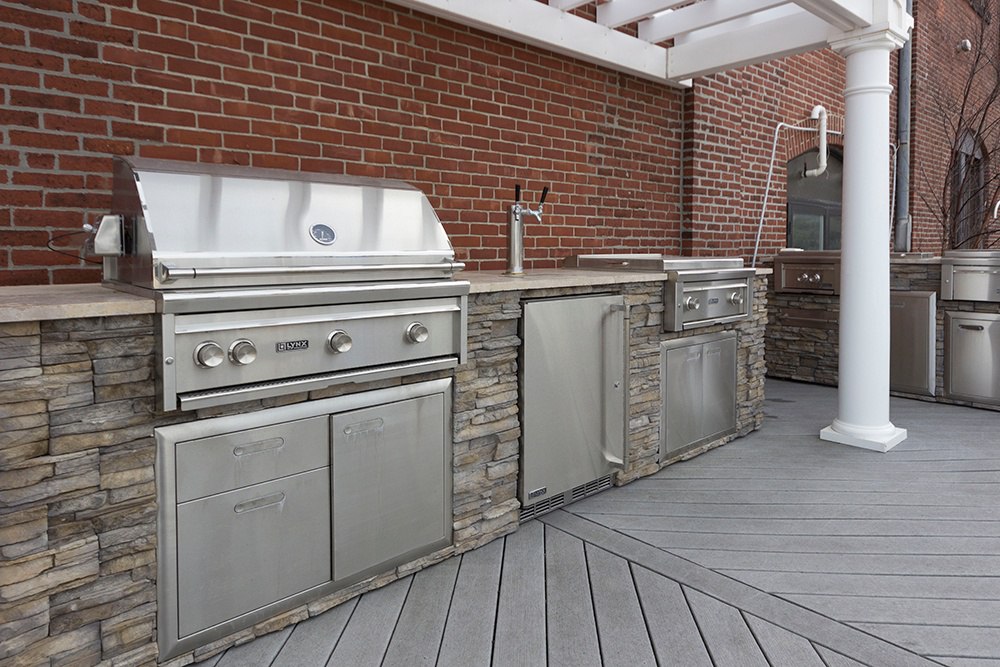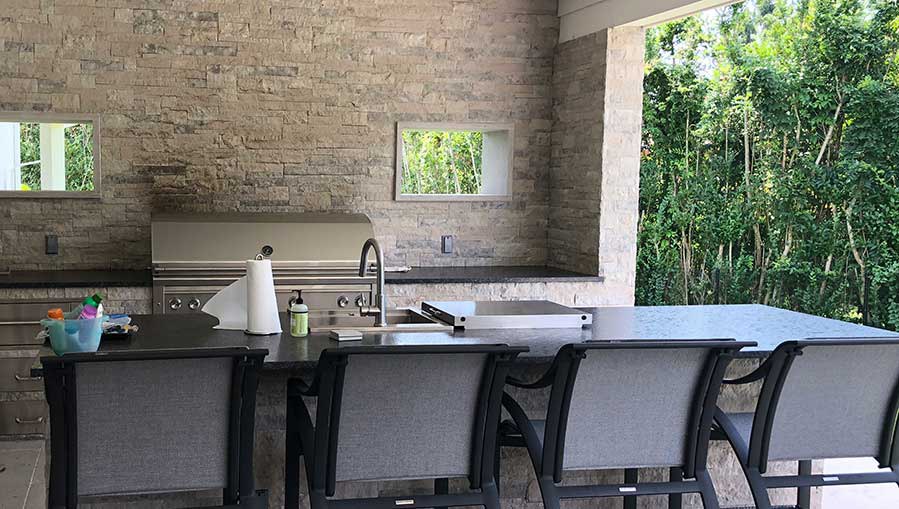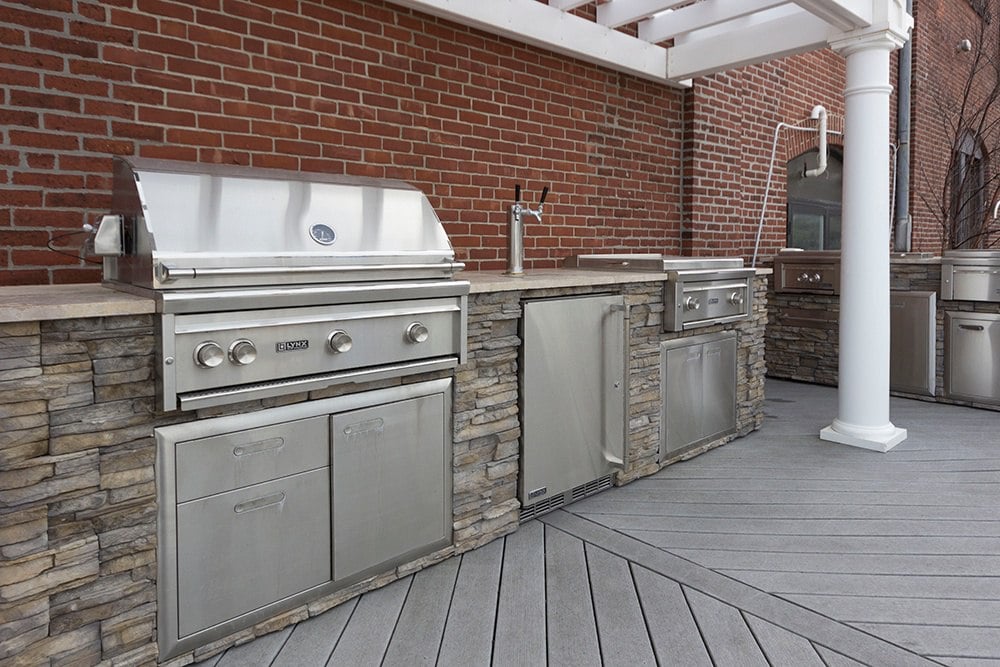You are right to consider placing your grill on your 3-season porch. Your friends and party guests cannot abandon you when you are in the middle of the party. It’s more civilized and far more social.
Winter, rain, the wind, and elements will also no longer be a challenge. You will have that covered (get it?).

Ours is Outside
It’s a very good idea until you actually do it. There will be problems you have not considered - big, unsolvable problems.
This article was inspired by a reader’s email and plea for help with the title “Nightmare in the Hamptons.”
In this article, you will learn why this is a bad idea. For the brave and often foolhardy, we will show you how to vent a grill properly.
Why You Should Not Place a Grill Inside

Have a look at a very nice build out.
Now the problem: Ventilation.
When they presently cook, it becomes smokey due to having no vent.
Most pro grills are a minimum of 75,000 BTU plus a sear element and a rotisserie element of 14-18,000 BTU. They also emit more smoke and grease than an equivalent professional range.
In this picture, there is no vent, so the smoke stays in the space even with the door in close proximity.
Also, the grill cover acts as a snorkel when opened pushing the smoke past any normal depth range hood. This is very different from a professional or commercial range.
You cannot even place a vent due to a deck installation on the top (must be cool up there). You also cannot vent horizontally, because the smoke would be in the house.
As a guess, the cost of materials and labor to vent after finishing the construction versus planning beforehand would be an additional $30,000.
However, with no place to locate the hood, you cannot even attempt venting this grill without removing that deck.
How You Can Place a Grill inside a 3-Season Porch
I do not recommend this.
Local codes may prevent this type of installation, so you should start there first.
Grills are better off outside where the smoke can dissipate without leaving grease, odor, and smoke inside your house.
Also, your builder, architect and interior designer are not usually qualified to understand how to vent a commercial type appliance.
You would need to hire a commercial ventilation supplier. Here is what they will probably recommend:
- A Stainless Steel Hood Shell of 27” Deep or More.
- A rooftop (not wall mounted) blower of 3,000 CFM or more depending on the grill vent pipe of 12-14 inches round.
The vent must be vertical, so the motor is pulling smoke already headed in that direction. You cannot turn or elbow the duct because that will reduce the static flow of smoke.
Again, venting must be planned in the beginning or planning phases of your construction.
You will have huge problems cutting a hole through your house, adjoining floors, and roof as well as adding a blower later after the work has already been done.
Final Words
Grills should be outside. Inside a porch is a great idea, but it’s also a great place for smoke to linger.
However, with the right ventilation, this is possible. Plan first with the right people and be prepared to spend plenty of money on the most powerful equipment.
Or just spend it on an awesome grill and place it outdoors instead.
Additional Resources
Get our free BBQ Grill Buying Guide for reviews, features, and specs of the best brands. Over 330,000 people have already found answers in a Yale guide.

Related Articles
Why Should You Trust Us?
It seems that every appliance review has nothing but glowing comments about almost every product, yet you read customer reviews and they are almost universally bad.
We are here to fill in the disconnect. We'll give you the best features, and the drawbacks as well, including reliability based on over 37,000 calls performed by our service team just last year. Our goal is to give you ALL the information so you know what's right for you.
Please consider subscribing or adding to the conversation in the comments below. We appreciate you stopping by.
Steve Sheinkopf
Steve Sheinkopf is the third-generation CEO of Yale Appliance and a lifelong Bostonian. He has over 38 years of experience in the appliance industry, and he is a trusted source of information for consumers on how to buy and repair appliances.
Steve has also been featured in numerous publications, including the
New York Times,
Consumer Reports,
The Boston Globe,
Bloomberg Radio, the
New York Post,
The Wall Street Journal, and
Entrepreneur, for his knowledge of how to buy appliances and appliance repair.
Steve is passionate about helping consumers find the best appliances for their needs, and he is always happy to answer questions and provide advice. He is a valuable resource for consumers who are looking for information on appliance buying, repair, and maintenance.
Despite being the worst goalie in history, Steve is a fan of the Bruins and college hockey, loves to read, and is a Peloton biker. The love of his life is his daughter, Sophie.




